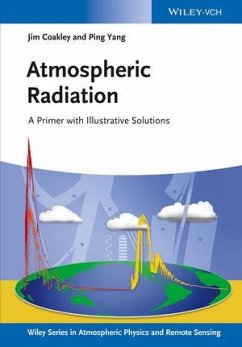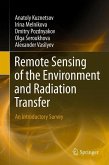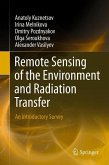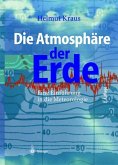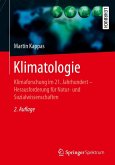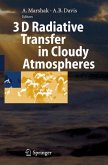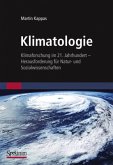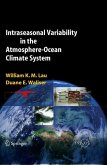- Broschiertes Buch
- Merkliste
- Auf die Merkliste
- Bewerten Bewerten
- Teilen
- Produkt teilen
- Produkterinnerung
- Produkterinnerung
Dieses Buch gibt einen ersten Eindruck des Strahlungstransfers in planetaren Atmosphären mit besonderem Augenmerk auf die Atmosphäre der Erde und deren Klima. Es umfasst das Wichtigste eines Einführungskurses über atmosphärische Strahlung.
Andere Kunden interessierten sich auch für
![Remote Sensing of the Environment and Radiation Transfer Remote Sensing of the Environment and Radiation Transfer]() Anatoly KuznetsovRemote Sensing of the Environment and Radiation Transfer38,99 €
Anatoly KuznetsovRemote Sensing of the Environment and Radiation Transfer38,99 €![Remote Sensing of the Environment and Radiation Transfer Remote Sensing of the Environment and Radiation Transfer]() Anatoly KuznetsovRemote Sensing of the Environment and Radiation Transfer38,99 €
Anatoly KuznetsovRemote Sensing of the Environment and Radiation Transfer38,99 €![Die Atmosphäre der Erde Die Atmosphäre der Erde]() Helmut KrausDie Atmosphäre der Erde74,99 €
Helmut KrausDie Atmosphäre der Erde74,99 €![Klimatologie Klimatologie]() Martin KappasKlimatologie39,99 €
Martin KappasKlimatologie39,99 €![3D Radiative Transfer in Cloudy Atmospheres 3D Radiative Transfer in Cloudy Atmospheres]() Alexander Marshak / Anthony Davis (eds.)3D Radiative Transfer in Cloudy Atmospheres39,99 €
Alexander Marshak / Anthony Davis (eds.)3D Radiative Transfer in Cloudy Atmospheres39,99 €![Klimatologie Klimatologie]() Martin KappasKlimatologie24,99 €
Martin KappasKlimatologie24,99 €![Intraseasonal Variability in the Atmosphere-Ocean Climate System Intraseasonal Variability in the Atmosphere-Ocean Climate System]() William K. M. LauIntraseasonal Variability in the Atmosphere-Ocean Climate System149,99 €
William K. M. LauIntraseasonal Variability in the Atmosphere-Ocean Climate System149,99 €-
-
-
Dieses Buch gibt einen ersten Eindruck des Strahlungstransfers in planetaren Atmosphären mit besonderem Augenmerk auf die Atmosphäre der Erde und deren Klima. Es umfasst das Wichtigste eines Einführungskurses über atmosphärische Strahlung.
Hinweis: Dieser Artikel kann nur an eine deutsche Lieferadresse ausgeliefert werden.
Hinweis: Dieser Artikel kann nur an eine deutsche Lieferadresse ausgeliefert werden.
Produktdetails
- Produktdetails
- Wiley Series in Atmospheric Physics and Remote Sensing .
- Verlag: Wiley-VCH
- Artikelnr. des Verlages: 1141098 000
- Seitenzahl: 256
- Erscheinungstermin: 23. Juli 2014
- Englisch
- Abmessung: 240mm x 170mm x 20mm
- Gewicht: 559g
- ISBN-13: 9783527410989
- ISBN-10: 3527410988
- Artikelnr.: 38106825
- Herstellerkennzeichnung
- Wiley-VCH GmbH
- Boschstraße 12
- 69469 Weinheim
- wiley.buha@zeitfracht.de
- Wiley Series in Atmospheric Physics and Remote Sensing .
- Verlag: Wiley-VCH
- Artikelnr. des Verlages: 1141098 000
- Seitenzahl: 256
- Erscheinungstermin: 23. Juli 2014
- Englisch
- Abmessung: 240mm x 170mm x 20mm
- Gewicht: 559g
- ISBN-13: 9783527410989
- ISBN-10: 3527410988
- Artikelnr.: 38106825
- Herstellerkennzeichnung
- Wiley-VCH GmbH
- Boschstraße 12
- 69469 Weinheim
- wiley.buha@zeitfracht.de
Professor James Coakley received his degrees in Physics: B.S. (1968) UCLA, and MA (1970) and PhD (1972) Berkeley. He entered the atmospheric sciences in 1972 as a Postdoctoral Fellow in the Advanced Study Program at the National Center for Atmospheric Research (NCAR) and stayed at NCAR in various staff scientist positions until moving to Oregon State University in 1988 where he is currently a Professor of Atmospheric Sciences in the College of Oceanic and Atmospheric Sciences. His research focuses on the problem of climate change and in particular on the remote sensing of aerosol and cloud properties from satellites, and the effects of aerosols and clouds on the Earth's energy budget and climate. Dr. Coakley is a Fellow of the American Meteorological Society and the American Association for the Advancement of Science. He has served on editorial advisory board for Tellus, as an Associate Editor for the Journal of Geophysical Research, and as Editor for the Journal of Climate. He has also served on various panels for the National Research Council and as a member for two of the Council's standing committees: Meteorological Analysis, Prediction, and Research and Climate Research. Professor Ping Yang received the B.S. (theoretical physics) and M.S. (atmospheric physics) degrees from Lanzhou, China, in 1985 and 1988, respectively, and the Ph.D. degree in meteorology from the University of Utah, Salt Lake City, USA, in 1995. He is currently a professor and the holder of the David Bullock Harris Chair in Geosciences, the Department of Atmospheric Sciences, Texas A&M University, College Station, Texas, USA. His research interests cover the areas of remote sensing and radiative transfer. He has been actively conducting research in the modeling of the optical and radiative properties of clouds and aerosols, in particular, cirrus clouds, and their applications to space-borne and ground-based remote sensing. He has co-authored more than 160 peer-reviewed publications. He received a best paper award from the Climate and Radiation Branch, NASA Goddard Space Center in 2000, the U.S. National Science Foundation CAREER award in 2003, and the Dean's Distinguished Achievement Award for Faculty Research, College of Geosciences, Texas A&M University in 2004. He is a member of the MODIS Science Team and. He currently serves as an associate editor for the Journal of Atmospheric Sciences, the Journal of Quantitative Spectroscopy & Radiative Transfer, and the Journal of Applied Meteorology and Climatology.
SIMPLE MODELS FOR THE RADIATIVE HAETING OF THE EARTH AND ITS ATMOSPHERE
Introduction
Radiative Heating of the Atmosphere
Global Energy Budget
The Window-Gray Approximation and the Greenhouse Effect
Climate Sensitivity
Radiative Time Constant
Radiation and the Earth's Global Mean Vertical Temperature Profile
Radiative Forcding Leads to Circulation
RADIATION AND ITS SOURCES
Basic Properties of Electromagnetic Wave
Wave-Particle Duality of Light
Blackbody Radiation
Incident Sunlight
TRANSFER OF RADIATION IN THE EARTH'S ATMOSPHERE
Cross Sections
Extinction Cross Section and Scattering Phase Function
Atmospheric Optical Phenomena Related to Light Scattering
Equation of Radiative Transfer
Transfer Equation for Solar Radiation
Transfer Equation for Terrestrial Radiation
SOLUTIONS TO THE EQUATION OF TRANSFER
Formal Solution to the Equation of Transfer
Solution for Thermal Emission
Solution for Scattering and Absorption
Single-Scattering Approximation
Fourier Decomposition of the Transfer Equation
Eddington Approximation for Scattering and Absorbing Atmosphere
Adding Layers in the Eddington Approximation
Adding a Surface with a Nonzero Albedo in the Eddington Approximation
Clouds in the Thermal Infrared
Diffusivity Factor
TREATMENT OF MOLECULAR ABSORPTION IN THE ATMOSPHERE
Absorption by Molecules
Molecular Absorption Lines and Line Shapes
Molecular Absorption Spectra
Distribution of Line Strengths for a Vibration Rotation Band
Absorption by a Single, Weak Absorption Line
Absorption by a Single, Strong, Pressure-Broadened Line
Inhomogeneous Ppaths
Bands of Isolated Lines
Approximate Treatments for Overlapping Lines
Exponential Sum-Fit and Correlated-K Methods
ABSORBTION OF SOLRA RADIATION IN THE EARTH'S ATMOSPHERE
Absorption of UV and Visible Sunlight by Ozone
Absorption of Sunlight by Water Vapor
SIMPLIFIED ESTIMATES OF EMISSION
Emission in the 15-?m band of CO2
Change in Emitted Flux Due to a Doubling of CO2
Change in Stratospheric Temperature Due to a Doubling of CO2
APPENDICES
Solving Differential Equations
Integrals of the Planck Function
Compilation of Line Parameters for Random Band Models
Absorption Cross Sections for Ozone and Oxygen at Ultraviolet and Visible
Wavelengths
Introduction
Radiative Heating of the Atmosphere
Global Energy Budget
The Window-Gray Approximation and the Greenhouse Effect
Climate Sensitivity
Radiative Time Constant
Radiation and the Earth's Global Mean Vertical Temperature Profile
Radiative Forcding Leads to Circulation
RADIATION AND ITS SOURCES
Basic Properties of Electromagnetic Wave
Wave-Particle Duality of Light
Blackbody Radiation
Incident Sunlight
TRANSFER OF RADIATION IN THE EARTH'S ATMOSPHERE
Cross Sections
Extinction Cross Section and Scattering Phase Function
Atmospheric Optical Phenomena Related to Light Scattering
Equation of Radiative Transfer
Transfer Equation for Solar Radiation
Transfer Equation for Terrestrial Radiation
SOLUTIONS TO THE EQUATION OF TRANSFER
Formal Solution to the Equation of Transfer
Solution for Thermal Emission
Solution for Scattering and Absorption
Single-Scattering Approximation
Fourier Decomposition of the Transfer Equation
Eddington Approximation for Scattering and Absorbing Atmosphere
Adding Layers in the Eddington Approximation
Adding a Surface with a Nonzero Albedo in the Eddington Approximation
Clouds in the Thermal Infrared
Diffusivity Factor
TREATMENT OF MOLECULAR ABSORPTION IN THE ATMOSPHERE
Absorption by Molecules
Molecular Absorption Lines and Line Shapes
Molecular Absorption Spectra
Distribution of Line Strengths for a Vibration Rotation Band
Absorption by a Single, Weak Absorption Line
Absorption by a Single, Strong, Pressure-Broadened Line
Inhomogeneous Ppaths
Bands of Isolated Lines
Approximate Treatments for Overlapping Lines
Exponential Sum-Fit and Correlated-K Methods
ABSORBTION OF SOLRA RADIATION IN THE EARTH'S ATMOSPHERE
Absorption of UV and Visible Sunlight by Ozone
Absorption of Sunlight by Water Vapor
SIMPLIFIED ESTIMATES OF EMISSION
Emission in the 15-?m band of CO2
Change in Emitted Flux Due to a Doubling of CO2
Change in Stratospheric Temperature Due to a Doubling of CO2
APPENDICES
Solving Differential Equations
Integrals of the Planck Function
Compilation of Line Parameters for Random Band Models
Absorption Cross Sections for Ozone and Oxygen at Ultraviolet and Visible
Wavelengths
SIMPLE MODELS FOR THE RADIATIVE HAETING OF THE EARTH AND ITS ATMOSPHERE
Introduction
Radiative Heating of the Atmosphere
Global Energy Budget
The Window-Gray Approximation and the Greenhouse Effect
Climate Sensitivity
Radiative Time Constant
Radiation and the Earth's Global Mean Vertical Temperature Profile
Radiative Forcding Leads to Circulation
RADIATION AND ITS SOURCES
Basic Properties of Electromagnetic Wave
Wave-Particle Duality of Light
Blackbody Radiation
Incident Sunlight
TRANSFER OF RADIATION IN THE EARTH'S ATMOSPHERE
Cross Sections
Extinction Cross Section and Scattering Phase Function
Atmospheric Optical Phenomena Related to Light Scattering
Equation of Radiative Transfer
Transfer Equation for Solar Radiation
Transfer Equation for Terrestrial Radiation
SOLUTIONS TO THE EQUATION OF TRANSFER
Formal Solution to the Equation of Transfer
Solution for Thermal Emission
Solution for Scattering and Absorption
Single-Scattering Approximation
Fourier Decomposition of the Transfer Equation
Eddington Approximation for Scattering and Absorbing Atmosphere
Adding Layers in the Eddington Approximation
Adding a Surface with a Nonzero Albedo in the Eddington Approximation
Clouds in the Thermal Infrared
Diffusivity Factor
TREATMENT OF MOLECULAR ABSORPTION IN THE ATMOSPHERE
Absorption by Molecules
Molecular Absorption Lines and Line Shapes
Molecular Absorption Spectra
Distribution of Line Strengths for a Vibration Rotation Band
Absorption by a Single, Weak Absorption Line
Absorption by a Single, Strong, Pressure-Broadened Line
Inhomogeneous Ppaths
Bands of Isolated Lines
Approximate Treatments for Overlapping Lines
Exponential Sum-Fit and Correlated-K Methods
ABSORBTION OF SOLRA RADIATION IN THE EARTH'S ATMOSPHERE
Absorption of UV and Visible Sunlight by Ozone
Absorption of Sunlight by Water Vapor
SIMPLIFIED ESTIMATES OF EMISSION
Emission in the 15-?m band of CO2
Change in Emitted Flux Due to a Doubling of CO2
Change in Stratospheric Temperature Due to a Doubling of CO2
APPENDICES
Solving Differential Equations
Integrals of the Planck Function
Compilation of Line Parameters for Random Band Models
Absorption Cross Sections for Ozone and Oxygen at Ultraviolet and Visible
Wavelengths
Introduction
Radiative Heating of the Atmosphere
Global Energy Budget
The Window-Gray Approximation and the Greenhouse Effect
Climate Sensitivity
Radiative Time Constant
Radiation and the Earth's Global Mean Vertical Temperature Profile
Radiative Forcding Leads to Circulation
RADIATION AND ITS SOURCES
Basic Properties of Electromagnetic Wave
Wave-Particle Duality of Light
Blackbody Radiation
Incident Sunlight
TRANSFER OF RADIATION IN THE EARTH'S ATMOSPHERE
Cross Sections
Extinction Cross Section and Scattering Phase Function
Atmospheric Optical Phenomena Related to Light Scattering
Equation of Radiative Transfer
Transfer Equation for Solar Radiation
Transfer Equation for Terrestrial Radiation
SOLUTIONS TO THE EQUATION OF TRANSFER
Formal Solution to the Equation of Transfer
Solution for Thermal Emission
Solution for Scattering and Absorption
Single-Scattering Approximation
Fourier Decomposition of the Transfer Equation
Eddington Approximation for Scattering and Absorbing Atmosphere
Adding Layers in the Eddington Approximation
Adding a Surface with a Nonzero Albedo in the Eddington Approximation
Clouds in the Thermal Infrared
Diffusivity Factor
TREATMENT OF MOLECULAR ABSORPTION IN THE ATMOSPHERE
Absorption by Molecules
Molecular Absorption Lines and Line Shapes
Molecular Absorption Spectra
Distribution of Line Strengths for a Vibration Rotation Band
Absorption by a Single, Weak Absorption Line
Absorption by a Single, Strong, Pressure-Broadened Line
Inhomogeneous Ppaths
Bands of Isolated Lines
Approximate Treatments for Overlapping Lines
Exponential Sum-Fit and Correlated-K Methods
ABSORBTION OF SOLRA RADIATION IN THE EARTH'S ATMOSPHERE
Absorption of UV and Visible Sunlight by Ozone
Absorption of Sunlight by Water Vapor
SIMPLIFIED ESTIMATES OF EMISSION
Emission in the 15-?m band of CO2
Change in Emitted Flux Due to a Doubling of CO2
Change in Stratospheric Temperature Due to a Doubling of CO2
APPENDICES
Solving Differential Equations
Integrals of the Planck Function
Compilation of Line Parameters for Random Band Models
Absorption Cross Sections for Ozone and Oxygen at Ultraviolet and Visible
Wavelengths

